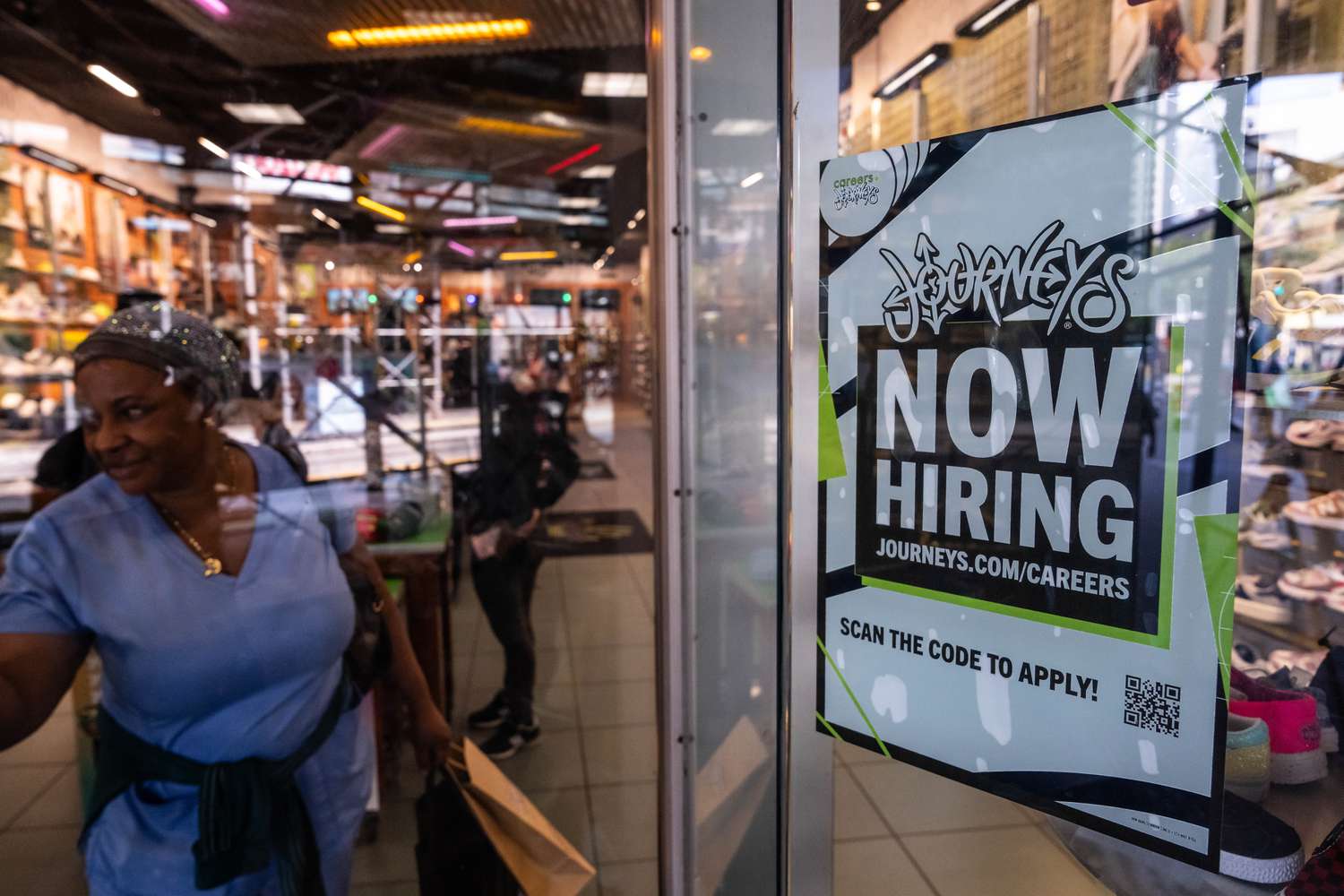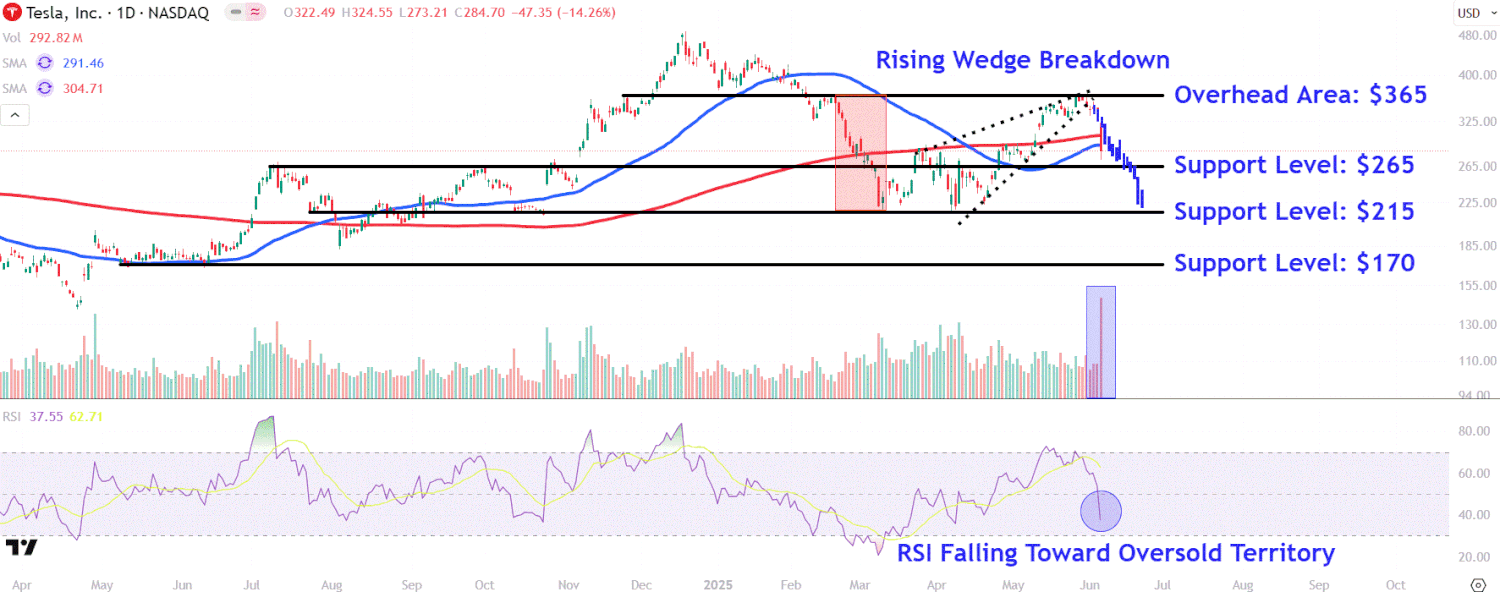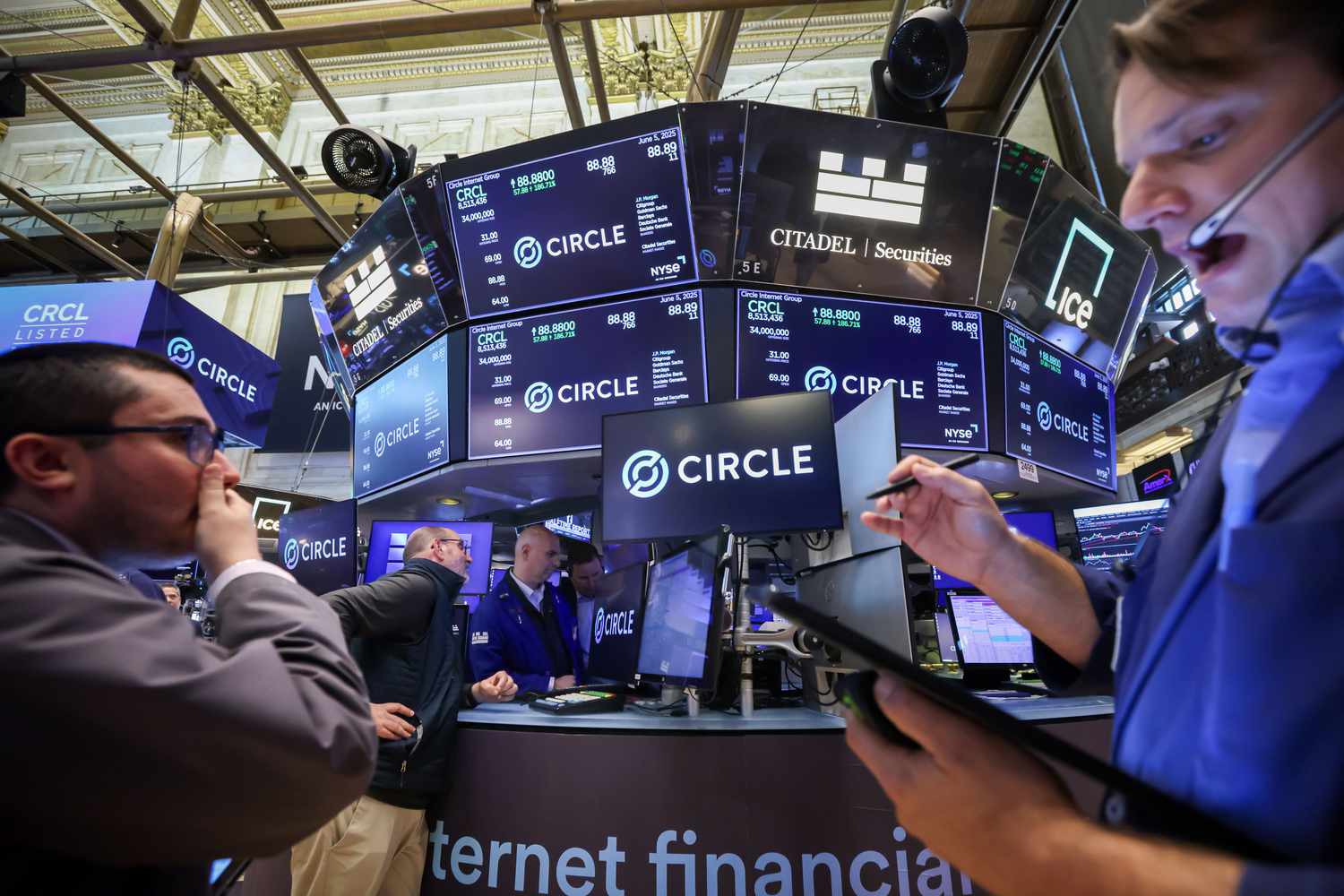Rare earth minerals are at the heart of trade discussions… why they’re so important… are rate cuts coming or not?… why learning to trade volatility is critical
This morning, President Trump and Chinese President Xi Jinping held a 90-minute phone call to discuss trade.
From Trump on Truth Social:
I just concluded a very good phone call with President Xi, of China, discussing some of the intricacies of our recently made, and agreed to, Trade Deal.
[It] resulted in a very positive conclusion for both Countries.
In the President’s post, he highlighted the key stumbling block in trade negotiations…
Rare earth elements (REEs).
According to reports in recent days, both sides have been ready to roll back much of their respective retaliatory levies, but the sticking point is rare earth elements.
In short, China has them… the West desperately needs them… and unless something changes, we’re about to feel the economic sting of their absence.
Back to Trump on Truth Social:
There should no longer be any questions respecting the complexity of Rare Earth products.
Let’s back up to make sure we’re all on the same page…
Rare earth elements (or minerals) are a group of 17 elements that can be difficult to find and extract
These elements contain unique magnetic, heat-resistant, and phosphorescent properties that make them critical for, well, the next generation of just about everything:
- Consumer products: They’re needed for all your favorite tech-products such as smart phones, computers, electric vehicles, LED lights, flat screen TVs, you name it…
- Tomorrow’s AI advancements: AI relies on powerful hardware components like GPUs and ASICs, which use rare earth elements like neodymium for magnets in cooling systems and motors, and gadolinium for heat resistance…
- National defense: REEs are critical for wide range of defense applications, including aircraft, submarines, missiles, and radar/sonar systems. You’ll find them in everything from magnets that power electric motors and actuators in fighter jets, to lasers, to guidance systems in missiles…
- Quantum computing: REEs such as ytterbium and europium are being used to create more stable and efficient qubits, the fundamental units of quantum information.
Basically, no REEs, no technology.
The U.S. is in a bind because China controls 90% of the world’s refining capacity.
And, no, we can’t just flip a switch and begin producing REEs. Any legitimate domestic production (at scale) would need at least five, possibly ten years to get up and running.
But by then, the race to AGI, humanoids, and possibly quantum computing supremacy, will have been decided.
China’s slow-walk on REE restrictions spurred President Trump’s lash-out from last week
In last Friday’s Digest, we covered how President Trump was angry at alleged Chinese violations of trade agreements. Here’s what he wrote on Truth Social:
The bad news is that China, perhaps not surprisingly to some, HAS TOTALLY VIOLATED ITS AGREEMENT WITH US.
So much for being Mr. NICE GUY!
At the time, the source of this violation was unclear, but we can now point to REEs.
Here’s The Wall Street Journal (it’s referencing rare earth “magnets” because the focus of the article is on their use in the auto industry):
China was supposed to have eased export controls on rare-earth magnets as part of a 90-day tariff truce agreement with the White House, but the country has slow walked license approvals for magnets.
Trump accused China of violating its deal with the U.S.
China has pushed back at the notion that it was to blame, alleging “discriminatory and restrictive measures” by Washington, including restricting exports of AI chips and revoking visas for Chinese students.
Unless trade talks are successful, the global auto industry is about to feel the consequences of the REE squeeze.
From Reuters:
Alarm over China’s stranglehold on critical minerals grew on Tuesday as global automakers joined their U.S. counterparts to complain that restrictions by China on exports of rare earth alloys, mixtures and magnets could cause production delays and outages without a quick solution.
German automakers became the latest to warn that China’s export restrictions threaten to shut down production and rattle their local economies, following a similar complaint from an Indian EV maker last week.
Auto sector troubles could be just a preview of what’s to come for other sector supply chains.
Bottom line: the world’s economic neck is exposed here. We must negotiate loosened restrictions on REEs or else we risk dangerous escalation.
We’ll dig into this potential escalation in greater detail in a coming Digest.
For now, if you want to invest in REEs, you have a handful of Western options. In this December Digest, we highlighted a few. Here’s how they’ve performed since as I write Thursday:
- Las Vegas-based Mp Materials Corp (MP): +9%
- Texas Mineral Resources Corp (TMRC): +94%
- Canadian-based Ucore Rare Metals (UURAF): +65%
To be sure, these stocks are volatile. Plus, recognize the binary bet you’re making…
If trade negotiations are successful, these stocks will likely pull back sharply. But if negotiations drag on – or fail – these players have moonshot potential.
We’ll keep you updated here.
Does the economy need rate cuts or not?
Earlier this week, we received conflicting data on the jobs market, raising questions about the Fed’s rate-cutting policy.
We’ll start with Tuesday’s JOLTS report.
Here’s The Wall Street Journal:
US job openings unexpectedly rose in April in a fairly broad advance and hiring picked up, indicating demand for workers remains healthy despite heightened economic uncertainty…
The rise in job openings, along with steady hiring and low unemployment, support the Federal Reserve’s assertion that the job market is in a good place…
So far, [labor market weakness] hasn’t shown up in the data yet, supporting the Fed’s posture to keep interest rates steady for now.
But then yesterday, the ADP jobs report showed that private payrolls increased just 37,000 in May, miles beneath the forecast for 110,000.
Here’s CNBC:
Private sector job creation slowed to a near standstill in May, hitting its lowest level in more than two years as signs emerged of a weakening labor market, payrolls processing firm ADP reported Wednesday…
“After a strong start to the year, hiring is losing momentum,” said Nela Richardson, chief economist for ADP.
So, which economy are we looking at?
One that’s “in a good place” that doesn’t need rate cuts? Or one that’s “losing momentum” with “signs [of] weakening” that desperately needs the Fed to come to the rescue?
This morning might have brought a tiebreaker…
The jobs placement group Challenger, Gray & Christmas released its May jobs report, titled:
May 2025 Job Cuts Up 47% Over Same Month Last Year; Cuts Spread to Other Sectors Than Gov’t for Other Reasons Than DOGE
Here’s Senior Vice President Andrew Challenger with the quick sum-up:
Tariffs, funding cuts, consumer spending, and overall economic pessimism are putting intense pressure on companies’ workforces.
Companies are spending less, slowing hiring, and sending layoff notices.
Digging into the data, through May, employers have announced 696,309 job cuts. That’s an 80% jump from the amount announced at the same time last year.
Futures traders are upping their bets on more rate cuts
Over the last two days, traders have assessed the incoming data and increased their bets on more cuts.
Traders now put the heaviest odds on two quarter-point cuts this year. Those odds clock in at almost 39%, ahead of the second-heaviest 31% probability of three quarter-point cuts.
I don’t think there’s any confusion about what President Trump wants…
From Trump on Truth Social yesterday:
ADP NUMBER OUT!!! ‘Too Late’ Powell must now LOWER THE RATE.
He is unbelievable!!! Europe has lowered NINE TIMES!”
Tomorrow brings the most significant labor market report that the Fed will be watching to navigate this complexity – the May jobs report.
Forecasters predict a slower pace of job growth yet a stable unemployment rate.
If the numbers surprise in either direction, the report could have market-moving potential.
How to profit if the market moves south
In yesterday’s Digest, we profiled analysis from master trader Jeff Clark. He believes we’re on the edge of bear market, with a potential bottom around 4,150 on the S&P this fall – after which, we’ll have a “generational buying opportunity.”
But even if Jeff is wrong, his strategy is still working in today’s “up” market.
Here he is explaining how you can be wrong and yet profitable with his trading style:
May was a great month for the stock market. But I was bearish.
I may have been wrong, but my readers still made 129% in a month. That’s because the stock market rallies are different this year than they have been in the past.
There’s lots of intraday volatility, lots of back-and-forth action, and lots of ways to trade profitably, no matter the overall direction.
I recommended four separate put option recommendations on the S&P 500 to my subscribers during the month of May. And, despite the broad stock market notching its best May gain in since 1990, we were profitable on all four trades.
The cumulative return was 129%, and the average time in the trades was just five days.
These weren’t one-off wins.
Since April 2 Liberation Day, Jeff has closed 25 trades:
- 19 winners
- 15 for double-digit gains
- 3 for triple-digit gains
We’d all be wise to learn how to trade volatility
Candidly, you may not have the time or mental bandwidth to trade volatility. Life gets busy, and for many, a buy-and-hold approach is simply more realistic.
If that’s you, make sure you’re holding high-conviction stocks – and that you have the stomach for a potential 30% drawdown, which Jeff sees as a real possibility.
But if you’re willing to sharpen your trading skills, volatile or bear markets become less of a threat and more of an opportunity.
By trading as markets decline, you can generate profits that you later reinvest into your long-term positions at the bottom – when prices are deeply discounted.
Yes, your long positions will still reflect the downturn after the selloff. But if you’ve been booking trading gains along the way, you’ll have fresh capital to deploy into your best ideas – at fire-sale prices.
If you haven’t been trading, you’re simply riding the rollercoaster with nothing to show for it but the ride down.
The best part about it is that Jeff’s trading strategy is simple and reliable.
Here’s Jeff:
Basically, we just wait until a stock or an index gets stretched too far in one direction or the other. Then we bet on the proverbial rubber-band snapping back. We look to buy stocks that are deeply oversold, and we look to sell/short stocks that have pushed too far into overbought territory.
Then, we exit the trades when conditions return to neutral.
This strategy paid off quite well during President Trump’s first term in office. It has been paying off again since the President has returned. And, I suspect it will continue to work well for the next 3.5 years – at least – no matter what the stock market does.
Next Wednesday June 11 at 10 a.m. ET, Jeff will get into more details. To reserve your seat, just click here.
We’ll keep you updated on all these stories here in the Digest.
Have a good evening,
Jeff Remsburg





















